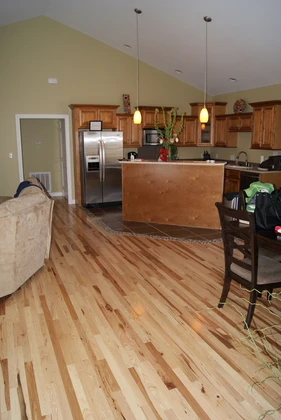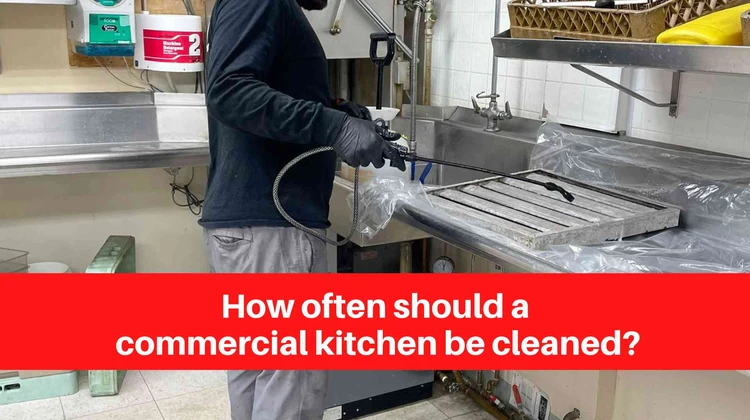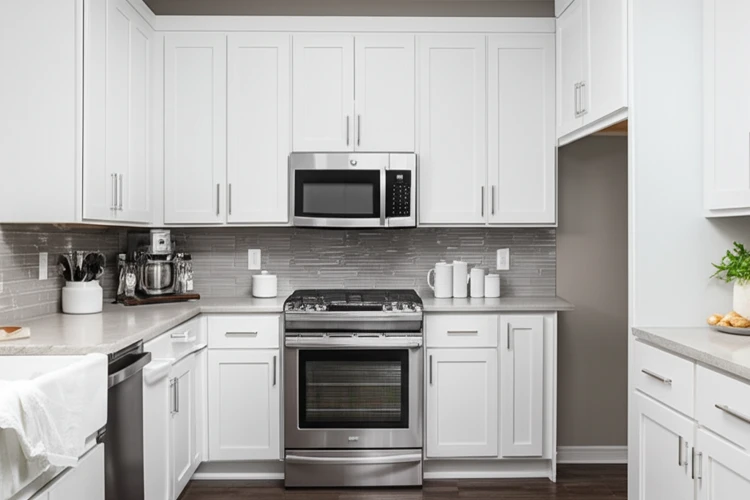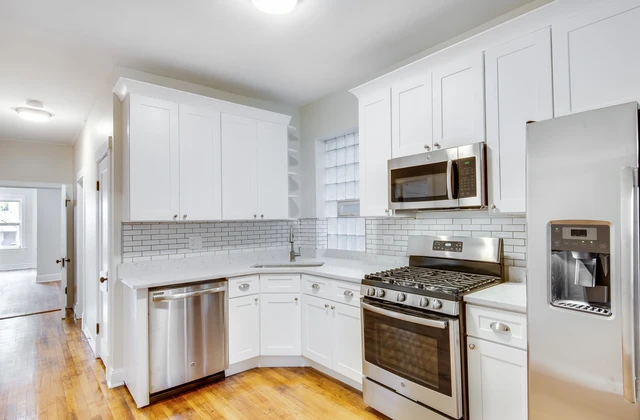Disclaimer: As an Amazon Associate, I earn commission from qualifying purchases.
Painting kitchen cabinets is a transformative way to update the look of your kitchen without the expense and hassle of a full remodel. However, the decision to paint your cabinets professionally versus doing it yourself can significantly impact the durability, quality, and overall aesthetic of the finished product. This article delves into the cost to paint kitchen cabinets professionally, exploring the benefits, factors affecting the cost, and practical tips to ensure your investment yields long-lasting results.
Why Paint Kitchen Cabinets Professionally?
Professional cabinet painting offers several advantages over DIY projects. Firstly, the durability of the paint job is significantly higher. Professionally painted cabinets can last for 8-15 years, according to industry statistics, compared to the 3-5 years typical of DIY jobs. This longevity is due to the use of high-quality paints and advanced techniques that DIY enthusiasts may not have access to.
Professional painters employ specialized techniques and tools, such as spray painting equipment, which ensures a smooth, even finish. These techniques are not only more efficient but also save time. For instance, a professional can complete a job in a fraction of the time it would take an amateur, allowing you to enjoy your updated kitchen sooner.
Real-life examples demonstrate the superior results of professional painting. A project completed by a professional painter in a suburban home showed that the cabinets maintained their fresh look even after five years of regular use, highlighting the durability and quality of professional work.
Factors Affecting the Cost to Paint Kitchen Cabinets Professionally
Several factors influence the cost to paint kitchen cabinets professionally. These include the size of the cabinets, the type of paint used, labor costs, and the preparation required. Let’s break down each factor:
Cabinet Size
The size of your kitchen cabinets is a primary determinant of the cost. Larger kitchens with more cabinetry will naturally require more paint and labor, increasing the overall cost. For example, a small kitchen with 10-15 cabinets might cost between $1,000 to $2,000, while a larger kitchen with 30-40 cabinets could cost between $3,000 to $6,000.
Type of Paint
The type of paint chosen also affects the cost. High-quality paints, such as oil-based or specialty latex paints, are more expensive but offer better durability and a more polished finish. According to HomeAdvisor, oil-based paints can cost around $50-$100 per gallon, while latex paints might range from $20-$50 per gallon.
Labor Costs
Labor costs vary by region and the expertise of the painter. Experienced painters with a proven track record will charge more for their services. In metropolitan areas, labor costs can range from $50 to $150 per hour, while in rural areas, the cost might be lower, around $30 to $80 per hour.
Preparation Needs
The preparation required before painting also impacts the cost. This includes cleaning, sanding, and priming the cabinets. If the cabinets are in poor condition, additional preparation steps may be needed, increasing the cost. For instance, repairing damaged cabinets or removing old paint layers can add $500 to $1,000 to the total cost.
Average Costs for Professional Kitchen Cabinet Painting
The average cost to paint kitchen cabinets professionally varies based on kitchen size and paint type. Here’s a breakdown:
Small Kitchens (10-15 Cabinets)
For small kitchens, the average cost ranges from $1,000 to $2,000. This includes basic preparation, standard latex paint, and average labor costs. High-end projects with specialty paints and extensive preparation can cost up to $3,000.
Medium Kitchens (20-25 Cabinets)
Medium-sized kitchens typically cost between $2,000 to $4,000. This range accounts for more substantial preparation needs and higher-quality paints. High-end projects can reach $5,000, especially if oil-based paints and extensive labor are required.
Large Kitchens (30-40 Cabinets)
Large kitchens can cost between $3,000 to $6,000. This higher range is due to the increased amount of paint and labor needed. High-end projects with top-tier paints and extensive preparation can cost up to $8,000 or more.
These cost estimates are based on data from recent market surveys and sources like HomeAdvisor and Angi, providing a balanced view of both high and low-end costs.
Preparing Your Kitchen Cabinets for Painting
Proper preparation is crucial for a successful cabinet painting project. Here’s a step-by-step guide:
Cleaning
Begin by cleaning the cabinets thoroughly to remove any dirt, grease, or residue. A degreasing cleaner is recommended for this step. Ensure all surfaces are clean and dry before proceeding.
Sanding
Sand the cabinet surfaces lightly to create a rough surface that the paint can adhere to. Use fine-grit sandpaper (220-grit) for this step. Be sure to remove any dust with a tack cloth after sanding.
Priming
Apply a primer to the cabinets to ensure better adhesion of the paint and to cover any stains or discolorations. A shellac-based primer is often recommended for its strong adhesion properties.
Professional painting guides emphasize the importance of proper preparation, as it directly affects the final outcome. Failure to prepare the cabinets correctly can lead to poor adhesion, uneven finishes, and reduced durability.
Choosing the Right Paint for Kitchen Cabinets
Selecting the right paint is essential for achieving a durable and attractive finish. Here are the different types of paint and their suitability for kitchen cabinets:
Oil-Based Paints
Oil-based paints are known for their durability and smooth finish. They are resistant to moisture and stains, making them ideal for kitchens. However, they have a longer drying time and stronger odor. Paint manufacturer guidelines suggest using oil-based paints for high-traffic areas due to their tough finish.
Latex Paints
Latex paints are water-based and easier to clean up. They dry faster and have less odor compared to oil-based paints. Latex paints are also more flexible and less likely to yellow over time. For a balance of durability and ease of use, latex paints are a popular choice.
When choosing paint, consider the pros and cons of each type. Oil-based paints offer superior durability but require more ventilation and drying time. Latex paints are more user-friendly but may not be as resistant to wear and tear.
Professional Painting Techniques
Professional painters use various techniques to achieve a high-quality finish. Here are the most common methods:
Spray Painting
Spray painting is preferred for its ability to create a smooth, even finish. This technique involves using a spray gun to apply the paint, resulting in a flawless coating. Professional painting tutorials recommend spray painting for large surfaces and intricate details.
Brush Painting
Brush painting is more traditional and can be used for smaller areas or touch-ups. While it may take longer, brush painting allows for more control over the paint application. A comparison of techniques shows that spray painting is generally faster and more efficient for larger projects.
Real-life examples demonstrate the effectiveness of these techniques. A kitchen cabinet painting project that used spray painting achieved a flawless finish in half the time it would have taken with brush painting.
Post-Painting Care and Maintenance
Maintaining your painted cabinets is crucial for ensuring their longevity. Here are some tips:
Regular Cleaning
Clean the cabinets regularly with a mild soap and water solution to remove dirt and grease. Avoid using harsh chemicals that can damage the paint.
Avoiding Excessive Moisture
Keep the cabinets dry and avoid exposing them to excessive moisture. Wipe up any spills immediately to prevent water damage.
Protecting from Scratches
Use soft cloths or sponges when cleaning to avoid scratching the paint. Also, be cautious when moving pots and pans to prevent accidental scratches.
Home maintenance guides emphasize the importance of regular care to maintain the quality of the paint job. Failure to maintain the cabinets can lead to premature wear and tear, reducing the lifespan of the paint.
Cost-Saving Tips for Professional Cabinet Painting
While professional cabinet painting can be expensive, there are ways to save money without compromising quality. Here are some tips:
Shop Around for Quotes
Get multiple quotes from different painters to find the best price. Ensure you are comparing apples to apples by asking for detailed estimates.
Off-Season Scheduling
Schedule your painting project during the off-season when painters may offer discounts. Avoid peak times like summer when demand is high.
DIY Preparation
Handle some of the preparation work yourself, such as cleaning and sanding, to reduce labor costs. However, ensure you do a thorough job to avoid compromising the final result.
Budgeting guides from home improvement experts suggest that planning and preparation can significantly reduce costs. However, it’s important to acknowledge potential trade-offs, such as the time and effort required for DIY preparation.
Environmental Considerations for Cabinet Painting
With growing concerns about environmental impact, choosing eco-friendly paint options is becoming more popular. Here are some considerations:
Eco-Friendly Paints
Eco-friendly paints are made with low or zero VOCs (volatile organic compounds), reducing their environmental impact. These paints are less harmful to the environment and safer for indoor use.
Sustainable Practices
Adopt sustainable practices such as using recyclable materials and minimizing waste during the painting process. Environmental studies and guidelines recommend choosing paints with eco-labels and certifications to ensure they meet environmental standards.
While eco-friendly options are beneficial, it’s essential to consider the pros and cons. Eco-friendly paints may be more expensive and have a shorter shelf life. However, they offer a healthier and more sustainable alternative.
Common Mistakes to Avoid When Painting Kitchen Cabinets
Mistakes can happen during a cabinet painting project, but knowing common pitfalls can help you avoid them. Here are some mistakes to watch out for:
Skipping Preparation
Skipping the preparation steps can lead to poor paint adhesion and an uneven finish. Ensure you clean, sand, and prime the cabinets properly.
Using the Wrong Paint
Choosing the wrong type of paint can result in a finish that doesn’t last. Make sure to select a paint suitable for kitchen cabinets, considering durability and resistance to moisture.
Rushing the Process
Rushing through the painting process can lead to mistakes and a poor-quality finish. Take your time to ensure each step is done correctly.
Professional painting advice highlights the importance of attention to detail and following best practices to avoid these common mistakes.
Frequently Asked Questions (FAQs)
What is the average time it takes to paint kitchen cabinets professionally?
The average time to paint kitchen cabinets professionally can vary depending on the size of the kitchen and the complexity of the job. Generally, it can take between 3 to 7 days to complete the painting process, including preparation, painting, and drying time.
Can I paint over existing paint on my kitchen cabinets?
Yes, you can paint over existing paint, but proper preparation is crucial. Ensure the existing paint is in good condition, clean the surfaces thoroughly, lightly sand to create a rough surface, and apply a primer before painting. Skipping these steps can lead to poor adhesion and an uneven finish.
How do I choose the best color for my kitchen cabinets?
Choosing the best color for your kitchen cabinets depends on your personal style and the overall aesthetic of your kitchen. Consider factors such as the color scheme of your kitchen, the amount of natural light, and the mood you want to create. Neutral colors like white, grey, and beige are popular choices for their versatility and ability to brighten up the space. Bolder colors can add a unique touch but may be more challenging to match with other elements in the kitchen.
What is the best way to clean kitchen cabinets before painting?
The best way to clean kitchen cabinets before painting is to use a degreasing cleaner to remove any dirt, grease, or residue. Wipe down the surfaces with a damp cloth and the cleaner, then dry thoroughly. Ensure all surfaces are clean and dry before proceeding with sanding and priming.
How long do professionally painted kitchen cabinets last?
Professionally painted kitchen cabinets can last between 8 to 15 years with proper maintenance. The longevity depends on the quality of the paint, the preparation process, and regular care. High-quality paints and professional techniques ensure a durable finish that withstands daily use.
How can I reduce the cost of professional cabinet painting?
To reduce the cost of professional cabinet painting, consider getting multiple quotes, scheduling the project during the off-season, and handling some preparation work yourself. Additionally, choosing a reputable but affordable painter and opting for standard paints over specialty options can help lower the overall cost.
Conclusion
Painting kitchen cabinets professionally is a worthwhile investment that can transform the look of your kitchen. By understanding the benefits, factors affecting the cost, and practical tips for preparation and maintenance, you can ensure a high-quality, durable finish. Apply the best practices discussed in this article to make informed decisions and achieve a beautiful, long-lasting result for your kitchen cabinets.







